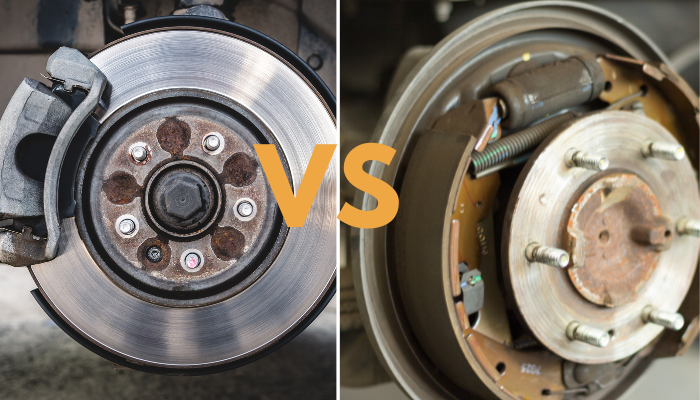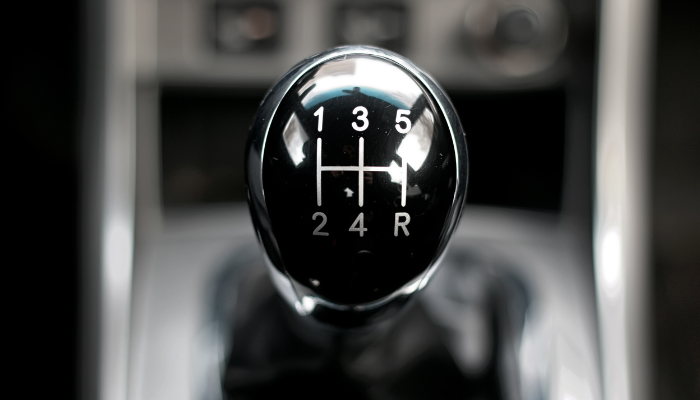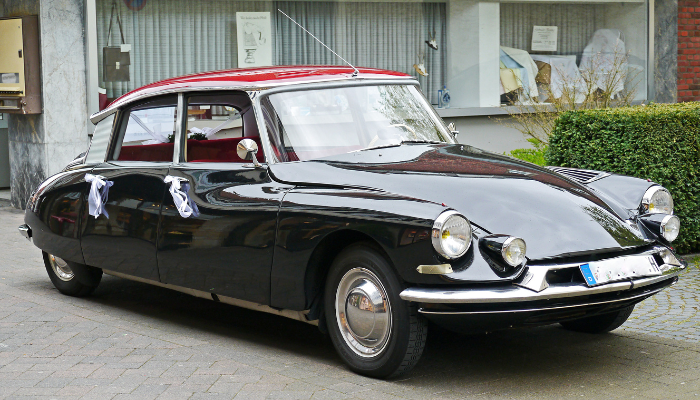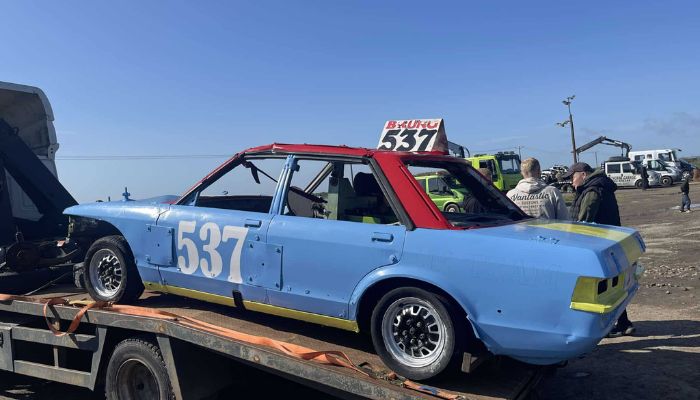When it comes to classic cars, originality is often a top priority. Keeping original parts and features not only preserves a car’s authenticity but also plays a big part in maintaining its value. However, safety can’t be overlooked—especially when you’re sharing the roads with modern traffic.
The growing popularity of the restomod scene shows that it’s possible to enhance safety, performance, and reliability without compromising a car’s classic charm. Many enthusiasts carefully upgrade critical components like brakes, suspension, and steering while preserving the original look and feel of the vehicle.
Upgrading your braking system is one of the easiest and most discreet improvements you can make, as the change is often hidden behind the wheels. So, could swapping your classic’s drum brakes for more modern disc brakes be the perfect balance between originality and peace of mind? Let’s take a closer look…
Understanding Drum Brakes
Drum brakes have been around since the early days of motoring and were once the standard for virtually all cars. In a drum brake system, brake shoes press outward against the inside surface of a spinning drum attached to the wheel, creating the friction needed to slow the car down.
They are simple in principle but have some notable strengths—and a few weaknesses—that are worth understanding when considering whether to stick with them or upgrade.
Advantages of Drum Brakes:
✔️ Cost-Effective:
Drum brakes are generally cheaper to manufacture, repair and replace. Parts are often more affordable, making them a budget-friendly option for keeping your classic on the road without huge maintenance bills.
✔️ Built-in Handbrake System:
Most drum brake setups cleverly incorporate a mechanical handbrake function. This means there’s no need for a separate system, making them straightforward and reliable when it comes to parking and hill-holding.
✔️ Durability for Light Use:
Because of their larger contact area, drum brakes can wear more slowly under normal, gentle driving conditions. For low-mileage classic cars used mostly for relaxed Sunday runs, they can offer reasonable longevity.
Disadvantages of Drum Brakes:
❌ Poor Heat Dissipation:
One of the biggest drawbacks is their struggle to cope with heat. Under repeated or heavy braking, drum brakes can overheat, leading to “brake fade”—where braking performance drops significantly just when you need it most.
❌ Reduced Performance in the Wet:
Water can get trapped inside the drum, reducing friction and meaning braking distances can increase until the brakes dry out—an obvious disadvantage in the unpredictable British weather.
❌ More Complex Maintenance:
Servicing drum brakes can be a fiddly task, involving lots of springs, levers, and adjustment mechanisms. Compared to disc brakes, inspecting wear or making repairs often requires much more time and patience.
Understanding Disc Brakes
Disc brakes started appearing more widely on cars from the 1950s onwards and are now the standard for most modern vehicles. They work by squeezing brake pads against a rotating metal disc (or rotor) that’s attached to the wheel. The friction between the pads and the disc slows the vehicle down.
They offer several key advantages over drums, particularly when it comes to performance, reliability, and maintenance.
Advantages of Disc Brakes:
✔️ Superior Heat Dissipation:
Because of their open design, disc brakes shed heat far more efficiently than drum brakes. This means they maintain strong, consistent braking performance even after repeated heavy use—ideal for modern driving conditions and spirited classic car runs.
✔️ Better Wet Weather Performance:
Water is quickly thrown off a spinning disc, so disc brakes are far less affected by rain or surface water. This leads to much more predictable stopping power whatever the weather—an important factor on Britain’s often soggy roads.
✔️ Easier Maintenance:
Disc brake systems are relatively simple and exposed, making it easy to inspect pads and discs for wear. Replacing brake pads is generally a quick and straightforward job, especially compared to stripping down a drum brake assembly.
Disadvantages of Disc Brakes:
❌ Higher Costs:
Upgrading to disc brakes can be a bigger upfront investment, especially if you need a full conversion kit including new hubs, calipers, and master cylinder modifications. Replacement parts such as pads and discs also tend to cost a little more than drum components.
❌ Potential Rotor Warping:
Under extreme conditions, such as aggressive braking from high speed, discs can warp if they don’t cool evenly. This can cause vibration through the pedal and might require machining or replacing the disc to restore smooth braking.
Should You Upgrade Your Classic Cars Brakes?
Choosing whether to upgrade your classic car’s brakes comes down to how you plan to use the vehicle and what you prioritise — originality or drivability.
Things to Consider Before Upgrading:
✔️ Your Driving Habits:
If your classic only comes out for the odd sunny Sunday run, and you’re mostly pootling about at lower speeds, well-maintained drum brakes may be perfectly adequate. However, if you intend to use your car more regularly — tackling busy traffic, motorways, hilly areas, or long road trips — the consistent performance of disc brakes will make a noticeable difference in both safety and confidence.
✔️ Balancing Originality and Safety:
Keeping a car’s original features can preserve its historical value, especially for concours or show purposes. That said, the restomod scene has shown us that tasteful, hidden upgrades can vastly improve a classic’s usability without spoiling its looks. A disc brake conversion can often be neatly tucked behind period-correct wheels, keeping the outward appearance authentic while boosting safety.
✔️ Ease of Conversion:
There’s a wide range of bolt-on disc brake conversion kits available nowadays for many popular classics, making the upgrade relatively straightforward. Some may require minor modifications, such as a new master cylinder or slightly larger wheels for clearance, but most are designed to be as sympathetic as possible to the original vehicle.
Real-World Experience:
Many classic owners who’ve made the switch to discs report a huge improvement in braking feel, shorter stopping distances, and more confidence behind the wheel. As one classic car enthusiast put it:
“Swapping to discs was the best mod I ever did — no drama, just smooth, predictable stops every time. I kept my old drums stored away just in case I ever want to return it to factory spec.”
Real Enthusiast Experience:
Many classic owners who’ve made the switch report night-and-day differences in confidence and drivability. One owner said:
“I swapped my 1964 C10 to power discs up front. Never looked back. The only catch was needing different wheels — check your clearances before you buy!”
(credit: Reddit Classic Cars community)
So, Drum Brakes Vs Disc Brakes, What’s best?
Upgrading from drum brakes to disc brakes is one of the smartest and safest improvements you can make to a classic car — but it’s a personal decision that depends entirely on how you use your vehicle.
If originality and historical accuracy are your top priorities, and you’re mainly enjoying gentle weekend drives, then sticking with drums can absolutely still be the right call — provided they’re properly maintained and adjusted. However, if you want improved stopping power, better wet weather performance, and more confidence on modern roads, a disc brake conversion is a very sensible upgrade.
The good news is, with carefully chosen parts and a bit of planning, it’s entirely possible to improve your car’s braking without ruining its original looks. It’s all about finding the balance between respecting the past and making sure you can enjoy your classic safely for many miles to come.
Whichever path you choose, the real joy lies in keeping these wonderful machines alive and out on the road — exactly where they belong.







Leave A Comment